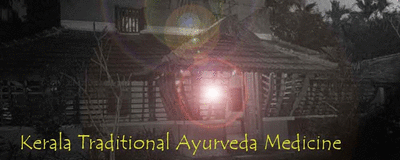Anti cancer treatment in Ayurveda
Ayurveda is said to be a science of life, it aims not only eradicating disease but also at increasing the body resistance ultimately ayurveda aims or in improving the quality of life.
Ancient time Acharyas have done clinical research on different drugs and disease, and gave the conclusion in concise form of books. In Ayurvedic classics many single, as well as compound drug formulation have been mentioned to treat and manage the disease cancer.
It is needless to say that cancer is a hazardous disease to mankind. The universal statistics points towards the same thing. It is necessity of the day to re-evaluate the Ayurvedic claims against the cancer and to re-examine them, as present modern science wants and also to give opinion on the justification of the Ayurvedic claims. This is the evaluatory purpose of this present study.
Failure of the universally accepted line of treatment radiation, surgery, chemotherapy leads man to conduct more research for cancer in all aspects and by different pathies. Though modern medicine has made more command in this field we also have approached and through research works found surprising results in many drugs like Vinca Rosea in blood cancer.
Bhallathka (Bottanical name: Semicarpus Anacardium) is the best drug for disease like cancer whose exact aetiopathogenesis is still unknown .this has been proved by various research workers and ancient Acharyas to have anticancerous properties.
Milk extract of the nut showed anti-inflammatory property against carrageen in, 5-HT and formaldehyde induced rat paw edema calcute anti-inflammatory studies. The extract was inactive on sub acute models of inflammation (Cotton pallet implantation in adrenalectomised rats and granuloma pouch in rats). The extract suppressed acute primary inflammation of adjuvant arthritis in albino rats only. It had no effect on secondary lesion. It effectively suppressed the tuberculin reaction in sensitized rats. Most of the animals treated with the extract gained in weight, but about 20% of animals developed apoplectic as well as gangrene of limbs, tail and ears.
The plant and its different parts are used as abortifacient, Vermifuge, Vesicant, Leprous nodules, Venereal infection, Nervous debility, Snake bite and Scorpion sting, Analgesic in Rheumatism, Antispasmodic, Hypotensive, Apetiser Cardiotomic, Emmenagogue, Syphilitic, Rheumatic and gouty trouble in Amavata and Kapha and anti hepatotoxic in abdominal tumor of nasopharynx, Anti cancer and anti allergic.
The significant effect of the plant was observed as anti-arthritic anti-tumor, Hypotensive anti-spasmodic and anti-allergic.
RGX (Nut tried in Castor Oil and that oil mixed in Hg and S) showed 34.5% reduction of carrageen in induced acute inflammation in rats in Longley dose. The oil was also found to possess significant analgesic effect in a dose of 300mg/kg against acetic acid induced writhing response in mice. The milk extract exhibited significant anti-inflammatory effect against carrageenin, 5-HT and formaldehyde induced acute inflammation in albino rats.
The nut extract exhibited negative in tropic effect on isolated frog heart. It antagonized carbachol, Histamine, Bacl2 and pitocin on rat, guinepig and rabbit item and rat uterus. It produced delayed hypotensive effect on anaeshetised dogs, which was unaltered by prior administration of atropine but blocked by mephramine. The nut extract was reported for its use as an anti tumor agent against abdominal tumor. It exhibited antitumor activity in the Nasopharynx.
The nut was found effective in Amavata and Kapha.
Pharmacological Investigations of certain medicinal plants and compound formulations used in Ayurveda and Siddha(CCRAS).
In Ayurvedic classics copius references regarding the properties and use of the drug are found. Its use is indicated as Rasayana(Bhandopadhyaya Particularly in gastrointestinal disorders et.al.1966)metabolic disease(Charak Chikitsa,17-19)
Ayurveda describes S. Anacardium to be a potent drug against variety of ailments and is popularly known as “Ardhya Vaidya” (Nadkarni K.M.,Indian Materia medica popular prakashan,Bombay,1976)
Its antihelminthic activity was found to be comparable with that of piprazine citrate
Indap et al.Carried out antitumor and pharmacological effects of bibba oil
Various reports on trials by Ayurvedic practitioners indicate that bibba can be given really with milk, ghee, peanut oil etc., and with such type of administration toxic effects are not observed but on the contrary anabolic effects are obtained.
It is Emenogauge, Antihelminthic, Chologauge,Nervine,Stomachic Carminative reported by Nadkarani and Kirtikar Basu
